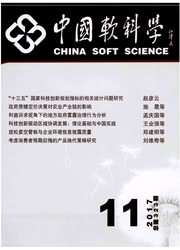

 中文摘要:
中文摘要:
本文基于可计算一般均衡(CGE)模型,通过引入碳税,分高、中、低3种税率以及生产性碳税、消费性碳税两种碳税形式,共6种情景对碳税政策的减排效果及其对宏观经济和各产业部门的影响进行了分析。结果发现,碳税的征收可以有效地减少CO2排放,在高税率下较不征收碳税可减排1141-2132万吨,总产出及国内产品供给不降反升,进口增加,复合品需求增加,主要用于满足投资需求;企业的投资及资本需求增加,替代了部分劳动需求,生产压缩导致企业收入减少;劳动需求下降引起居民收入下降,而产品价格上涨导致居民消费下降;政府收入中碳税和进口关税的增加抵消所得税下降部分略有剩余,政府收入增加。碳税的征收有效地降低了高碳含量的能源产品的供给和需求,同时也对非能源部门造成一定的影响,玩具体育娱乐用品、针编织及其制品、基础化学原料、皮革羽毛制品、文化办公用机械、日化产品、纺织毛织服装等制造业部门受到的负面影响较大,而通讯设备、电子设备元器件制造、建筑业、仓储业、汽车制造以及林业等部门所受的正面作用较为明显。
 英文摘要:
英文摘要:
This paper introduces carbon tax into a Computable General Equilibrium (CGE) model, and simulates its abatement effect and impacts on China's economy under 6 scenarios, with respect to two kinds of carbon tax, the productive and consumptive ones, and three different tax rate levels. The simulation suggests that carbon tax can reduce the CO2 emission effectively, amounting to 11.41 and 21.32million tons abatement under consumptive and productive scenarios respectively with high tax rate. Once carbon tax is levied, GDP and domestic supply increases, and import increases simultaneously; demand for compound product has an ascending tendency, mainly to fulfill the investment demand; on thefactor of markets, investment and requirement for capital rise slightly, while demand for labor decreases due to factor substitution. The shrinking production scale of firms leads to a decline of enterprise income and the corresponding ownership income. Both the decline of ownership income and income from labor supply cut down the total and disposable income of the residents. That is one reason to explain the dropping consumption of residents, while another reason is the tax - added price rise. Meanwhile, government revenue climbs up owing to the levy on carbon tax and tariff increase, despite of the decrease in income tax from residents and enterprises. From the disaggregated point of view, carbon tax lowers the demand and supply of energy products that have high carbon content, and affects the non - energy sectors in opposite ways : Toys, sporting and athletic and recreation products, knitted and crocheted fabrics and articles, basic chemicals, leather, fur, down and related products, cultural and office equipment, chemical products for daily use, cotton, woolen, hemp textiles and textiles productions, wearing apparel are sectors that suffer the most, while other sectors such as telecommunication equipment, electronic computer, other electronic and communication equipment, electronic element and device, construction, storag
 同期刊论文项目
同期刊论文项目
 同项目期刊论文
同项目期刊论文
 期刊信息
期刊信息
